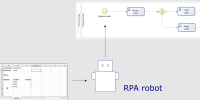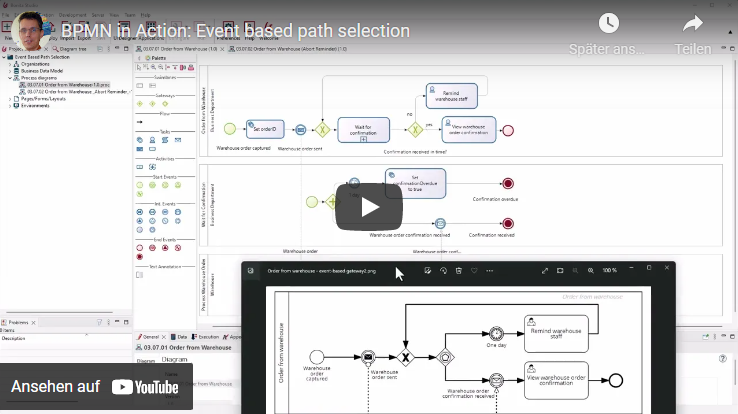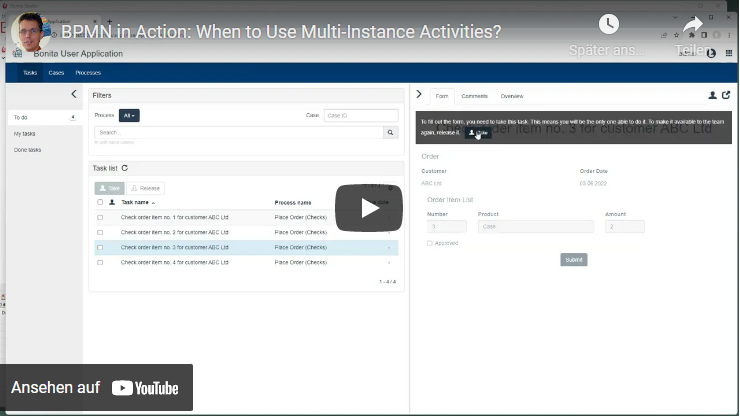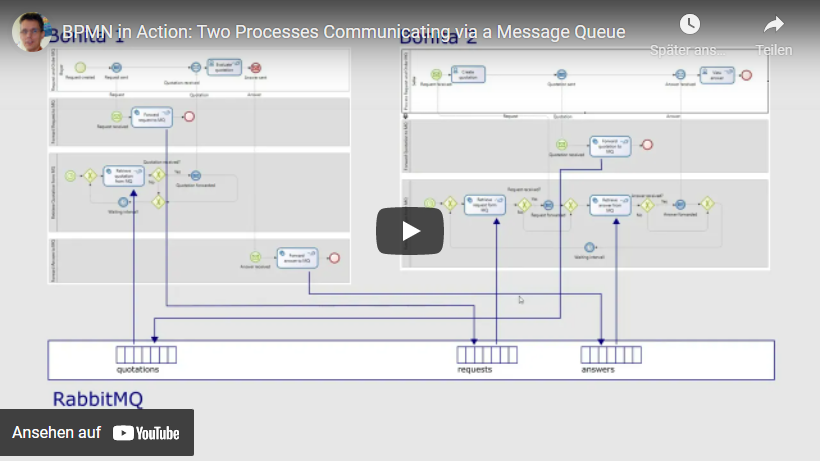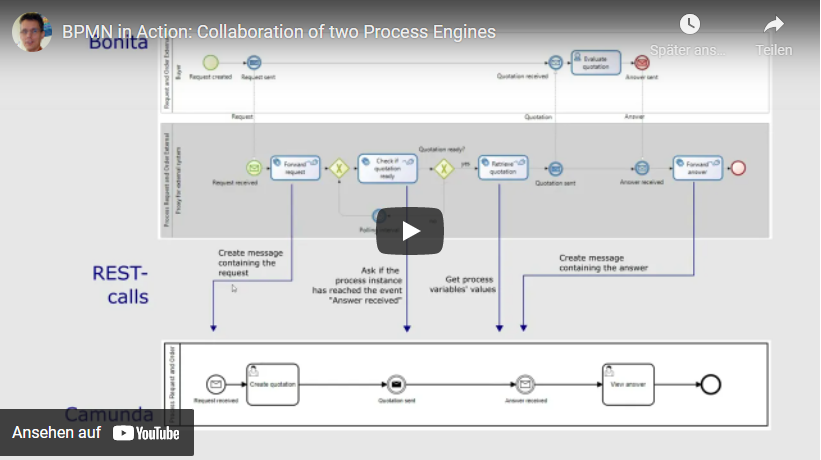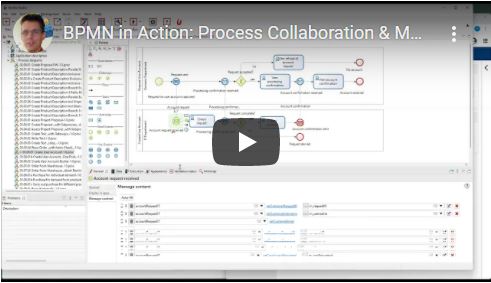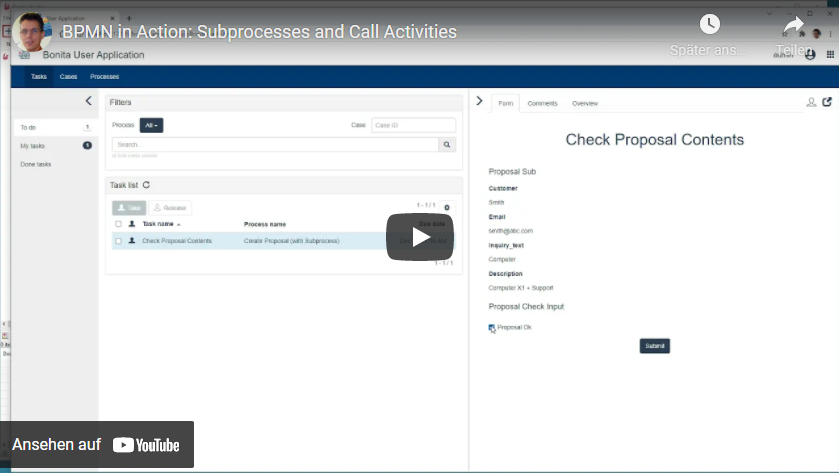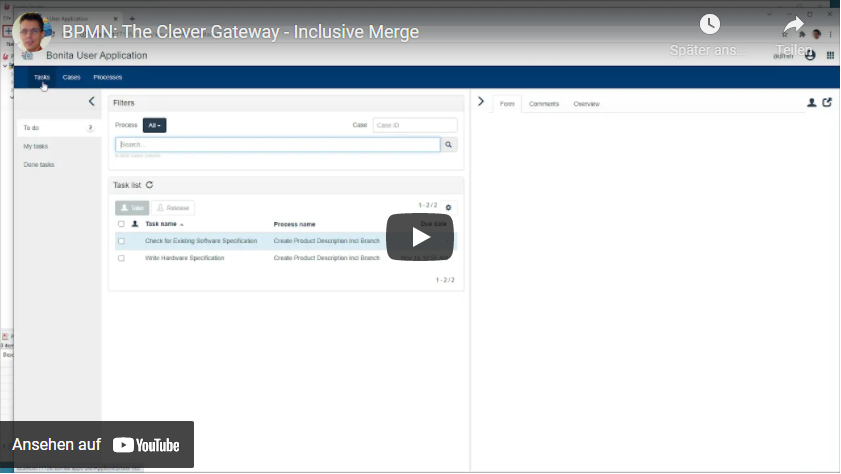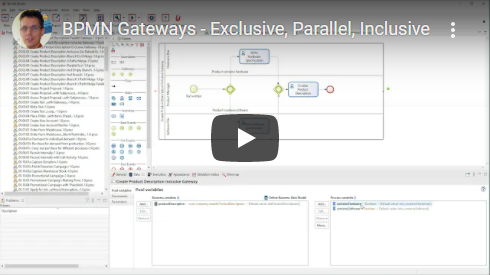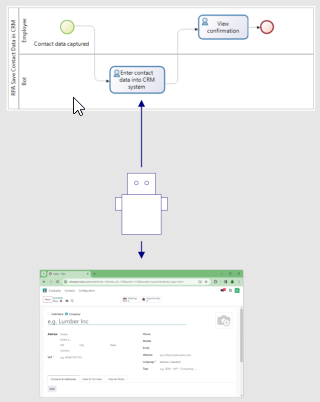
In this post, I describe another example of the interaction between executable processes and Robotic Process Automation (RPA). The last post was about an RPA bot starting a process and transferring data from an Excel file to it. In today’s example, a bot is to carry out a task within a process and transfer data to an external system.
The external system used here is „Odoo“, a comprehensive business software. As there is no suitable connector in the Bonita BPM system for calling this software, the bot logs into the system like a human and enters the data via the user interface.
As RPA system I use Microsoft Power Automate Desktop again. In a similar example developed some time ago, I had used the RPA system UI-Path. Since UI-Path provides a REST interface, I just called the bot via this interface. Unfortunately, it turned out that the free version of Power Automate Desktop does not have a suitable interface.
